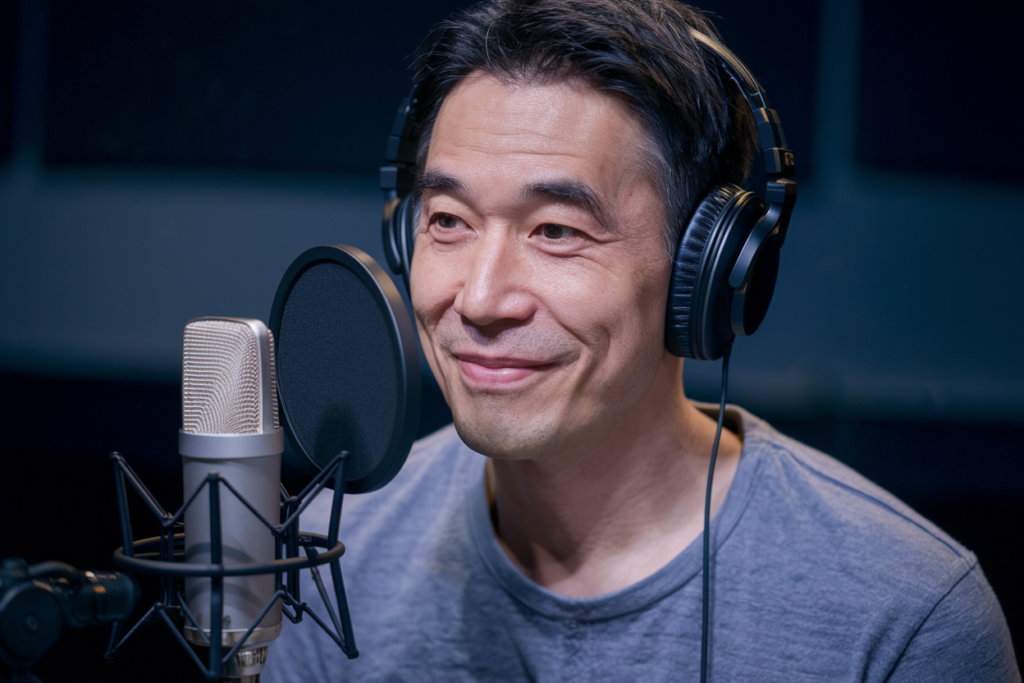Key Takeaways
- Unique Writing Systems: Japanese utilizes three writing systems—Hiragana, Katakana, and Kanji—which contribute to its complexity compared to Chinese and Korean.
- Grammatical Structures: Japanese employs a subject-object-verb (SOV) order, while Chinese follows a subject-verb-object (SVO) format; Korean also uses SOV but includes complex honorifics.
- Phonetic Differences: With only five vowel sounds, Japanese phonetics rely heavily on pitch accents for meaning differentiation, contrasting with the tonal nature of Mandarin Chinese.
- Cultural Influences: The Japanese language has been shaped by cultural exchanges with Chinese and English, evident in its vocabulary and expressions.
- Honorific Language: Honorifics are crucial in Japanese communication, reflecting social hierarchies and relationships more intricately than in other East Asian languages.
- Regional Dialects: Japan’s diverse regional dialects add an additional layer of richness to the language landscape, showcasing local customs and history.
Ever wondered how Japanese stacks up against other East Asian languages? You’re not alone. With its unique writing systems and grammar, Japanese can seem like a puzzle, especially when compared to Chinese or Korean.
Overview of Japanese Language
Japanese, an intriguing member of the East Asian language family, features a complex structure that sets it apart from its regional counterparts like Chinese and Korean. The language employs three writing systems: Hiragana, Katakana, and Kanji. Hiragana is primarily used for native words and grammatical elements, while Katakana serves foreign loanwords and onomatopoeia. Kanji consists of characters borrowed from Chinese, which can lead to unique interpretations depending on context.
In terms of grammar, Japanese uses a subject-object-verb (SOV) order. This differs significantly from English’s subject-verb-object (SVO) structure. You might notice how sentences often omit subjects when context provides clarity; this subtlety adds layers to everyday communication.
Phonetics in Japanese also differ greatly from other East Asian languages. With fewer vowel sounds than many languages, pronunciation remains relatively straightforward for learners. However, pitch accent plays a crucial role in meaning—altering tone can change the definition of a word entirely.
Understanding these distinct components makes grasping the intricacies of Japanese essential for effective communication within various contexts or industries.
East Asian Languages
East Asian languages showcase a rich tapestry of linguistic features that intrigue learners and linguists alike. Understanding these languages requires an appreciation for their unique characteristics, as well as the similarities they share.
Key Features of East Asian Languages
East Asian languages, such as Japanese, Chinese, and Korean, have distinct phonetic systems and grammar structures. Japanese employs three writing systems: Hiragana, Katakana, and Kanji. Chinese primarily uses characters known as Hanzi, while Korean utilizes Hangul.
Grammatical structure varies among these languages. For instance:
- Japanese has a subject-object-verb (SOV) order.
- Chinese maintains a subject-verb-object (SVO) format.
- Korean also follows an SOV pattern but incorporates complex honorifics in its speech.
Phonetics is another area of divergence. Japanese has fewer vowel sounds compared to Chinese and Korean. In contrast to English’s intonation patterns, pitch accent plays a significant role in Japanese meaning differentiation.
Commonalities Among East Asian Languages
Despite their differences, East Asian languages exhibit several commonalities:
- Use of Characters: All employ logographic elements or characters derived from Chinese origins.
- Contextual Meaning: Context heavily influences interpretation across these languages due to word ambiguity.
- Honorific Language: Formality levels impact verb forms and vocabulary choices significantly.
These shared traits create a fascinating interplay among the languages while maintaining each language’s identity. Understanding these aspects helps you navigate the complexities when working with voice talent familiar with East Asian dialects or when considering projects targeting audiences who speak these languages.
Japanese Language Comparison With East Asian Languages
Japanese exhibits unique characteristics when compared to other East Asian languages like Chinese and Korean. These distinctions enhance its complexity and beauty, making it a fascinating language for learners.
Phonetic Comparisons
Japanese phonetics differ significantly from those of Chinese and Korean. While Japanese features five vowel sounds, Chinese has more varied vowel combinations, leading to intricate tonal variations. Korean includes both vowels and consonants that create complex syllable structures. Additionally, pitch accent plays a crucial role in Japanese; altering the pitch can change meanings of words. This contrasts with the tonal nature of Mandarin Chinese, where tone changes can completely alter a word’s definition.
Grammatical Structures
Grammatically, Japanese utilizes an SOV (subject-object-verb) order, similar to Korean. In contrast, Chinese employs an SVO (subject-verb-object) structure. Understanding these differences is vital for grasping sentence formation across these languages. For example, while you might say “I eat sushi” in English or Chinese structure, in Japanese you’d express it as “I sushi eat.” The use of particles in Japanese adds further layers of nuance not present in the other languages.
Vocabulary and Lexical Borrowing
Vocabulary reflects cultural exchanges among East Asian languages. Japanese incorporates numerous loanwords from English and other languages while also borrowing extensively from Chinese characters known as Kanji. Despite this overlap, context often dictates meaning—certain borrowed terms may shift or adapt uniquely within each language framework. Moreover, honorifics play an essential role in the vocabulary used in Japan compared to relatively straightforward addressing forms found in Mandarin or Korean.
Understanding these aspects enriches your appreciation for the intricacies of the Japanese language within the broader spectrum of East Asian linguistics.
Cultural Influences on Language
Cultural influences significantly shape the Japanese language, intertwining with its vocabulary, expressions, and even grammatical structures. You can see these influences reflected in how Japanese incorporates elements from Chinese and English.
Chinese Influence
Chinese culture has heavily impacted Japan for centuries. The introduction of Kanji characters from China transformed the Japanese writing system, adding layers of meaning to words. This logographic system allows for nuanced expression, where a single character can convey complex ideas. For instance, the character “愛” (ai) signifies “love,” enriching communication with depth that pure phonetic scripts might lack.
English Borrowings
In more recent years, English has contributed a plethora of loanwords to Japanese vocabulary. Terms like “コンピュータ” (konpyūta) for “computer” are commonplace in everyday conversation. These borrowings often adapt meanings based on context and usage within Japanese culture, showing flexibility and innovation in language evolution.
Honorifics and Social Context
Honorifics play an essential role in maintaining social harmony in Japan. By using different forms of address depending on relationships or contexts, you navigate social hierarchies effectively through language alone. This contrasts sharply with East Asian languages like Mandarin or Korean, which also utilize honorifics but may not be as intricate as those found in Japanese.
Regional Dialects
Japan’s geography contributes further diversity to its linguistic landscape through regional dialects or “方言” (hōgen). Each region boasts unique pronunciations and expressions influenced by local customs and history. When communicating across regions, understanding these dialectal variations enhances mutual comprehension.
These cultural dimensions highlight how language is more than mere words; it reflects societal values and histories that connect people across generations.
Conclusion
Exploring the intricacies of Japanese in relation to other East Asian languages reveals a fascinating tapestry of linguistic features. Each language boasts its own unique systems and structures that reflect rich cultural backgrounds.
Understanding these differences not only enhances your language-learning journey but also deepens your appreciation for the interconnectedness of these languages. Whether you’re drawn to the elegance of Kanji or the rhythm of pitch accent, each element offers insights into societal values and communication styles.
By embracing this knowledge, you can navigate conversations more effectively while honoring the nuances that make each language distinct.
Frequently Asked Questions
What are the three writing systems in Japanese?
Japanese has three writing systems: Hiragana, Katakana, and Kanji. Hiragana is used for native Japanese words and grammatical functions, Katakana is primarily for foreign loanwords and onomatopoeia, while Kanji consists of characters borrowed from Chinese that represent meanings.
How does Japanese grammar differ from English grammar?
Japanese uses a subject-object-verb (SOV) structure, unlike English’s subject-verb-object (SVO) order. This means that in Japanese sentences, the verb typically comes at the end, which can change how thoughts are organized compared to English.
What is pitch accent in Japanese?
Pitch accent refers to variations in pitch that influence word meaning in Japanese. Unlike tonal languages like Mandarin Chinese, where tone changes entire syllables’ meanings, pitch accent alters specific syllables within words to convey different meanings.
How many vowel sounds does the Japanese language have?
Japanese has five distinct vowel sounds: /a/, /i/, /u/, /e/, and /o/. This limited set contrasts with other East Asian languages such as Chinese and Korean, which feature more complex vowel combinations and tonal variations.
Why are honorifics important in the Japanese language?
Honorifics play a crucial role in maintaining social harmony by reflecting respect and hierarchy within relationships. They influence vocabulary choices based on context and familiarity levels between speakers, making them integral to effective communication in Japan.
How do regional dialects affect the Japanese language?
Regional dialects add diversity to the Japanese language by incorporating unique vocabulary, pronunciation differences, and local customs. These dialects reflect historical influences and cultural practices specific to different areas of Japan.
What impact did Chinese have on the development of the Japanese writing system?
Chinese significantly influenced the development of Kanji in Japan. The introduction of these characters enriched Japan’s writing system by allowing for nuanced expression through logographic elements adapted for use with native phonetics.
Are there any recent linguistic influences on modern Japanese?
Yes! Modern Japanese has incorporated numerous loanwords from English due to globalization. This adaptability showcases how languages evolve over time while maintaining their core structures amidst cultural exchanges.







